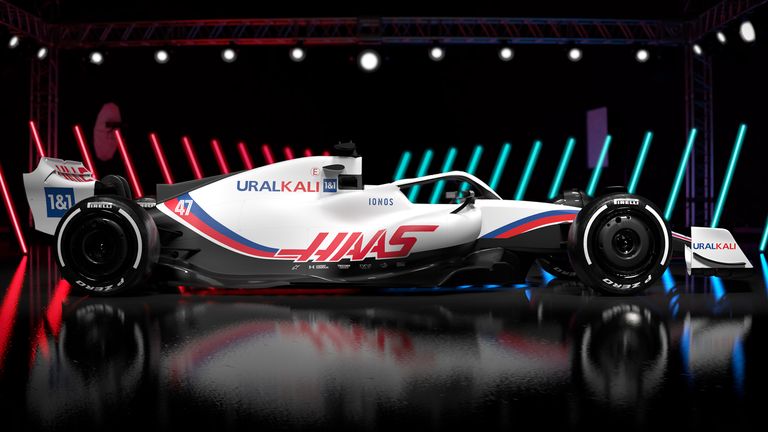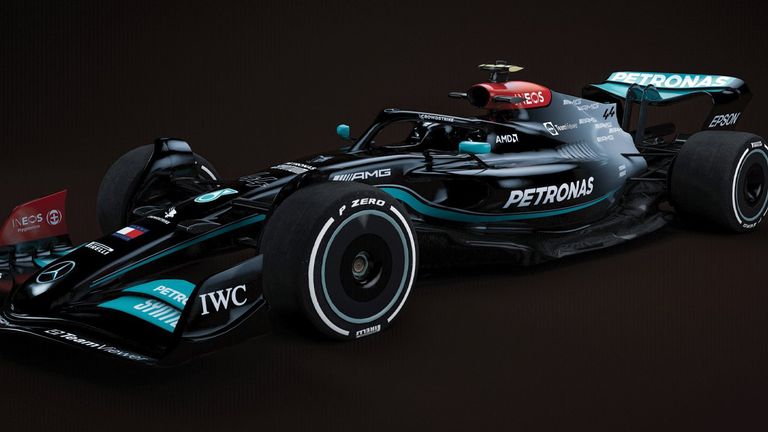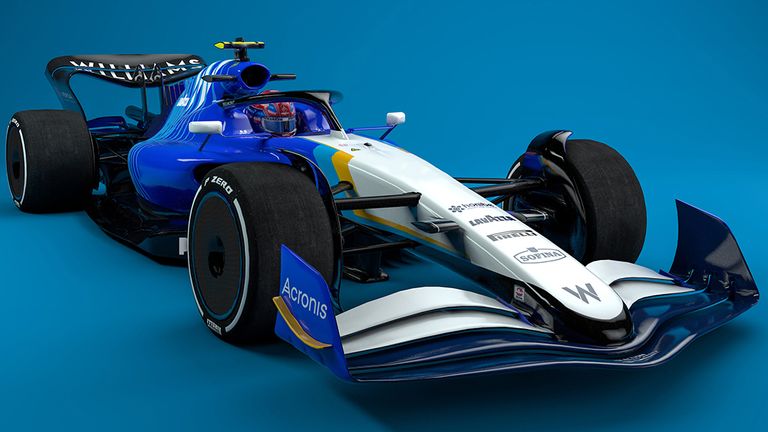Formula 1 in 2022: Explaining the new rules and car changes as teams prepare for first launches
Haas first to reveal livery on Friday, while Red Bull, Aston Martin and McLaren are launching their cars next week; Williams only team not to confirm launch date so far as teams get ready for all-new era of F1
Friday 4 February 2022 12:16, UK
Why is F1 changing?
You're probably wondering why - after one of the most exciting seasons in decades - F1 is completely overhauling its rules and cars.
There's a few explanations for that. Traditionally, regulations have been changed for safety, as if F1 just keeps letting teams make their cars faster and faster - the last era of cars were the quickest-ever - then it gets more and more difficult to make the sport as safe as possible.
That may have been a factor for this year's revolution, although the main reason is that F1 wanted to move on from an era that has been - Max Verstappen's title win aside - dominated by Mercedes, while also providing fewer overtaking opportunities than hoped due to the weight, speed and downforce of the cars.
The new rules, which were initially planned for 2021 before being delayed due to the pandemic, are aimed at improving the show, first and foremost, and F1 is hoping for unpredictability and plenty of excitement.
What are the changes?
The rule changes mean we have a completely new generation of cars.
The concept, marking one of the biggest technical changes in F1 history, has been overhauled from recent years and is, in essence, a simplified yet striking new-look race car following a drastic aerodynamics overhaul.
The key changes are:
- A ground-effect floor. The 2022 car has two long underfloor tunnels which create a 'ground effect' - meaning there is more suction under the car to pull it to the tarmac, while also ensuring more of the downforce is generated from under the car. The concept was popular back in the 1970s and '80s in F1.
- A simplified front wing and a sharp new rear wing. These not only look great, but the completely new parts on the 2022 cars have been designed to stop sending airflow outwards, narrowing it instead. The curved rear wing still has DRS, although it may be less impactful.
- 18-inch tyres with wheel winglets. Another throwback addition, the bigger tyres are aesthetically pleasing while they should also improve the handling of the cars. The winglets have been added to help direct air away from the rear wing.
What will the changes do?
The new cars don't just look a lot different, but they should have a marked effect on the on-track product, with more exciting and competitive wheel-to-wheel racing the expectation.
They are designed with a focus on shifting the aerodynamic focus from the wings to underneath the car, making it easier to follow the car in front, and thus improve racing.
F1's estimations are that the 2021 cars lost 35 per cent of their downforce within three car lengths of the car in front and almost 50 per cent in a single car length. You may have heard the words 'dirty air'.
The new cars? They claim to drop those numbers to just four and 18 per cent respectively.
"They're relying a lot more on air passing underneath the car very quickly which sucks the car down onto the ground, and gives what we like to call ground effect," said Sky F1's Ted Kravitz.
"You've created a vacuum," added Anthony Davidson. "There's suction to the ground, and you're relying less on the wings to give you rear grip, and more on the floor."
Who will be the teams and drivers to beat?
Rule changes are always exciting for F1 teams as they essentially reset the pecking order and give them a blank slate to redesign a competitive car. That leads to unpredictability and could lead to surprises, with teams often acing the new regulations out of nowhere - take Brawn back in 2009.
That being said, Mercedes and Red Bull, and Lewis Hamilton and new champion Verstappen, will likely still start the season as the favourites. Although look out for teams like Ferrari - the Scuderia have been openly targeting this rules reset over the last few years - and other big-name outfits with a point to prove such as McLaren and Aston Martin.





